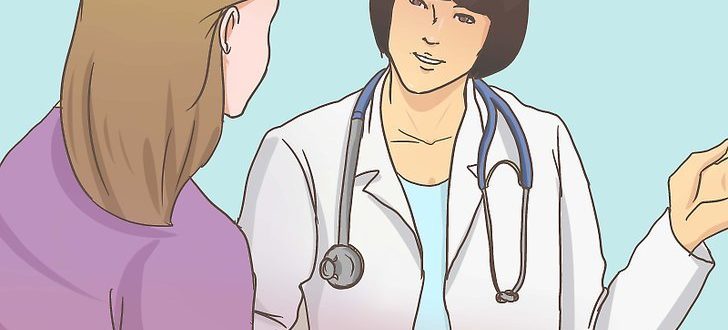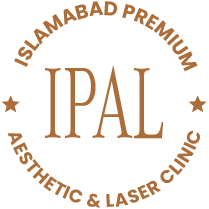- HOME
- ABOUT
- FACE SCULPTING
- SKIN
- BODY
- FACE
- EQUIPMENT
- POST PROCEDURE
- CONTACT US
- HOME
- ABOUT
- FACE SCULPTING
- SKIN
- BODY
- FACE
- EQUIPMENT
- POST PROCEDURE
- CONTACT US
WHEN DO I NEED TO SEE A DERMATOLOGIST IN RAWALPIND
admin
January 26, 2023

A dermatologist is a doctor who specializes in treating problems of the skin, hair, nails, and mucous membranes. Currently, there are many qualified and certified dermatologists, who have a lot of experience in everything related to skin problems. A dermatologist can also provide support for cosmetic problems, helping patients revitalize and rejuvenate the appearance of their skin, hair, and nails. The Centers for Disease Prevention and Control has estimated that there is a number. Too large unaccredited dermatologists. Therefore patients should carefully research when choosing a dermatologist.
1. Dermatology is concerned with the health of the skin, nails, and mucous membranes.
2-Dermatologists treat more than 3,000 skin conditions, including acne, psoriasis, and skin cancer.
3. They are trained in performing and performing dermal transplantation, laser therapy, excision, and more.
What is dermatology?
Dermatology is a medical field concerned with the health of the skin and diseases of the hair, nails, and mucous membranes. The skin is the largest body organ in the body as well as is the first line of protection versus germs and also injuries, as well as it usually reflects overall health. A 2013 study reported that 42.7% of patients had visited their doctors at some point due to their suffering from a skin disorder.
ALSO READ: skin prick test vs patch test
Before seeing a dermatologist in Rawalpindi, what should you know?
It is important to know that you are seeing a dermatologist who has a license to practice the profession or is certified by the best skin specialist in Islamabad. Some practitioners in spas and clinics call themselves dermatologists; But they do not have the correct accreditation; a qualified dermatologist would be board-certified from the American Board of Dermatology, the American Board of Osteopathic and Dermatology, or the Royal College of Physicians and Surgeons of Canada. The American Academy of Dermatology is the biggest team of dermatology in the USA, with greater than 20,000 members. In order to qualify for registration, a dermatologist must finish medical school and then complete a year of practical training. Some dermatologists have the initials FAAD after their name, which means that they are a member of the American Academy of Dermatology. Where these initials indicate that the dermatologist: 1. Licensed to practice medicine 2. Pass the exams for either the American Board of Dermatology or the Royal College of Physicians and Surgeons of Canada. 3. He is a member of the American Academy of Dermatology; this information is to help people with skin, hair, or nail problems find a dermatologist close to them.
The most common cases in Rawalpindi
Dermatologists can deal with more than 3000 various skin diseases. Therefore, practicing the profession of dermatology requires a great depth of clinical knowledge. Dermatologists require to know the many internal problems that can trigger skin signs. Here are some examples of the more common conditions that dermatologists are trained to treat:
1. Vitiligo
It is a skin disease in which the skin loses pigment or melanin, resulting in spots on the skin that are lighter than the color of the skin.
2. Acne
It is one of the most common diseases among young people in their teens, as acne is a disease that affects the oil glands of the skin. It has a range of reasons that lead to many different types of pimples. Acne can lead to depression, low self-esteem, low self-esteem, and scarring on the face.
3. Dermatitis and Eczema
It is an inflammation and also inflammation of the skin. It usually results in swelling with a scratchy rash. Dermatitis takes different forms, consisting of contact dermatitis, seborrheic dermatitis, and also atopic dermatitis. All of these infections affect the skin in different ways.
4. Fungal infections
Fungi can infect skin, nails, and hair. Fungal infections are common and symptoms are usually mild. But it can cause more serious symptoms for people with reduced immunity. There is a group of yeasts called Candida, which is a fungus that resembles barley’s yeast and can cause a wide range of diseases including oral thrush and balanitis.
5. Hair disorders
Too many people around the world suffer from hair problems and genetic loss. Hair loss may be the result of an underlying condition such as alopecia areata, or an isolated problem. Hair can also be affected by head lice, which is an insect that lives in the hair and spreads widely among children, especially those between the ages of 3 and 12 years, and this problem may be the result of an infection.
6. Nail problems
Dermatologists also treat conditions and causes that affect nail health. These complaints are often due to fungal infections and toenails growing inside. Nail problems are often a sign of other underlying conditions.
7. Psoriasis
It is a chronic disorder of the skin’s immune system, which accelerates the growth of skin cells. This rapid growth results in thick red scales and silvery scales. Since there are many different types of psoriasis, psoriasis can sometimes have an appearance similar to eczema.
8. Rosacea
It is a chronic skin disease characterized by red deformities on the nose and forehead, and this redness on the face is similar to blushing. They often appear as small, pus-filled bumps. Rosacea can also cause blood vessels and swollen eyelids. Rosacea can spread from the nose and cheeks to the forehead, chin, ears, chest, and back. And middle-aged women of fair skin often suffer from rosacea.
9. Laser surgery
Skin doctors can utilize a unique beam of light to treat a range of skin issues, including growths, growths, moles, tattoos, birthmarks, marks, creases, as well as unwanted hair
10. Mohs surgery
Called Mohs microsurgery, this is a specific type of surgery for skin cancer. Where skin layers are removed and examined under a microscope to get rid of cancer cells while preserving as much healthy tissue as possible. The successive layers are removed so that the surgeon does not find other cancer cells. Mohs surgery is only performed by surgeons who specialize in Mohs microsurgery and this requires additional medical training.
ALSO READ:Best skin specialist in Rawalpindi
11. Psoralen combined with ultraviolet rays (PUVA):
Psoralen is a plant extract that is made into a drug that makes the skin more sensitive to radiation therapy. Psoralen is used to treat severe skin conditions such as psoriasis, dermatitis, and vitiligo.
12. Implantation and flap of the skin
The flap is the healthy skin and tissue that is used to cover the wound, so it is called mobile tissue. Where dermatologists can repair the lost skin by using skin from elsewhere in the body and implanting it in a specific area. The skin can be transplanted using a piece of tissue devoid of the need for its own blood supply or a flap of skin tissue can be created near the area of ?? skin loss.
13. Tumescent liposuction
Dermatologists use a process called liposuction to remove excess fat from the body. Where large amounts of local anesthetic are injected into the fatty tissue and then absorbed from the body. Amorphous liposuction is not a cure for obesity, but rather a cosmetic procedure to contour and sculpt the body. Dermatologists can also use lasers to selectively blast fat cells and help remove the swollen fluid.
14. Treating veins
The superficial veins of the leg are small and widening veins. Also known as spider veins, they are often removed for cosmetic reasons. Sclerotherapy is typically the preferred treatment for spider capillaries. Where dermatologists administer a foam or solution into a vein. This will annoy the inner lining, causing it to close. The vein becomes less distinct and noticeable or disappears altogether.
When do you need to see a dermatologist in Rawalpindi?
Individuals experiencing symptoms of a disease affecting the skin, hair, nails, or mucous membranes should see a dermatologist if the condition does not respond to home treatment. People with cosmetic problems may also consult a dermatologist who specializes in cosmetology. Also, those looking for skin cancer screening should see a dermatologist to be checked. Any skin treatment that you need in the coming period should also be discussed with your insurance company. Since insurance companies often do not finance cosmetic procedures, they consider them optional and can be dispensed with. So, in the case of treating skin diseases and not for cosmetic purposes, make sure to obtain copies of any relevant medical reports, advisory notes, and diagnostic test results to confirm the medical necessity for treating skin diseases.

